This post may contain affiliate links, which means I may receive a small commission should you decide to click that link and make a purchase. For more information please refer to the Terms & Conditions.
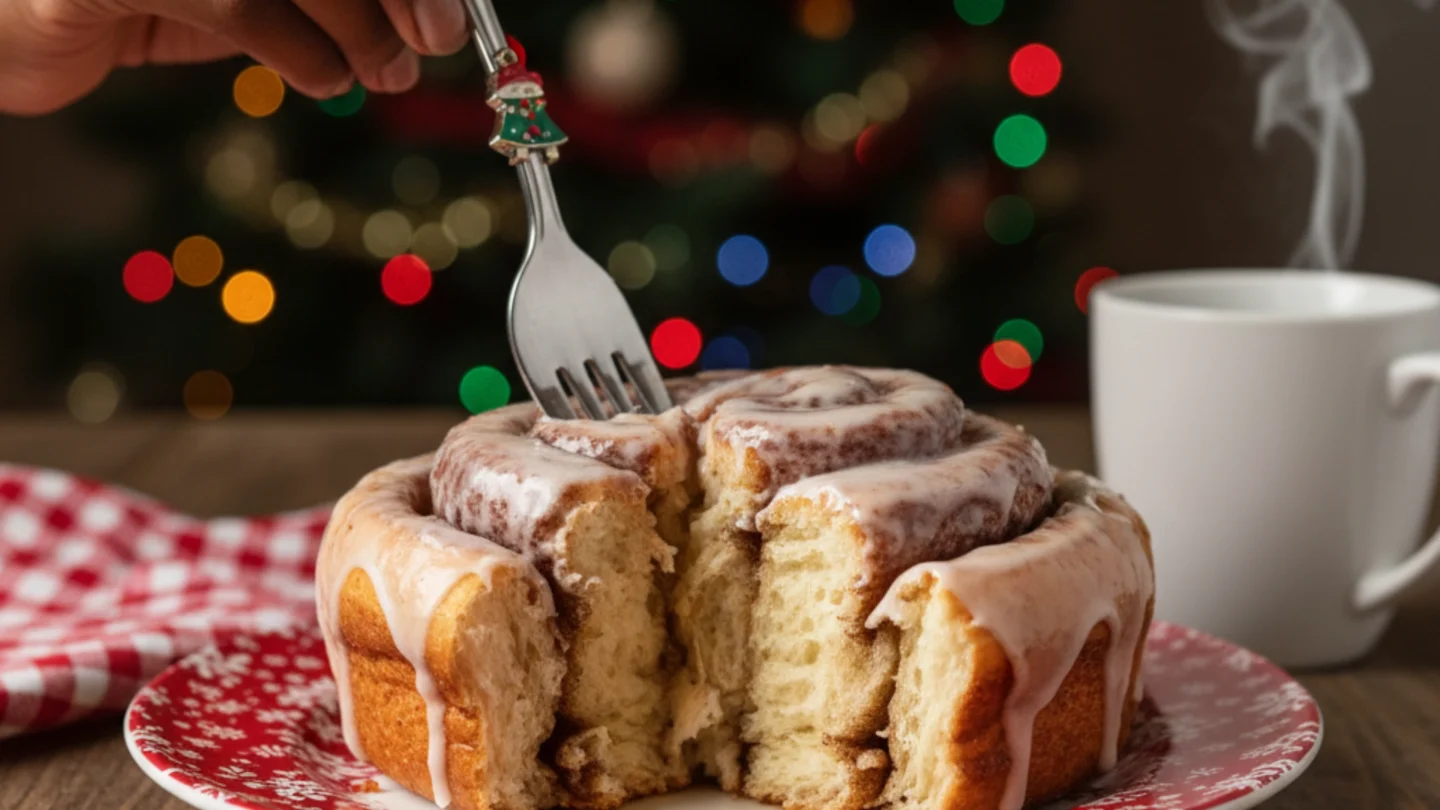
I absolutely love the feeling of Christmas morning: the quiet magic, the cozy pajamas, and the incredible smell wafting from the kitchen. That amazing smell has always been my perfect Holiday Cinnamon Rolls.
I have spent years getting this recipe just right. I was on a mission for the fluffiest, cloud-like dough imaginable. I also needed a gooey, buttery center and a tangy cream cheese frosting.
After all that tweaking, I think I’ve finally cracked the code. I want to share this with you because it’s more than a recipe. It’s a tradition waiting to happen in your own home.
This is the sweet treat that will make your holiday morning truly unforgettable.
Why These Are the Perfect Holiday Cinnamon Rolls
This recipe is all about incredible texture and flavor. These Holiday Cinnamon Rolls are the opposite of dry and bready. They are unbelievably soft, moist, and rich in every single bite.
The secret is an enriched, brioche-style dough. It bakes up to be perfectly pillowy and tender. The filling also creates a gooey, caramelized layer at the bottom of the pan.
Here’s the best part for a stress-free holiday: You can make these cinnamon rolls the night before. They are the ultimate low-stress, high-reward breakfast.
Just imagine waking up on Christmas morning. You can pop them in the oven, ready to go. Your whole home will fill with the most amazing festive scent.
This lets you focus on what really matters. You enjoy the moment with your family and still get all the credit for an incredible homemade treat.
Gathering Your Ingredients: The Foundation of Flavor
Before you start, it’s key to get your ingredients in order. The quality and temperature of your ingredients can make a massive difference in the final result. Think of this as setting the stage for success.
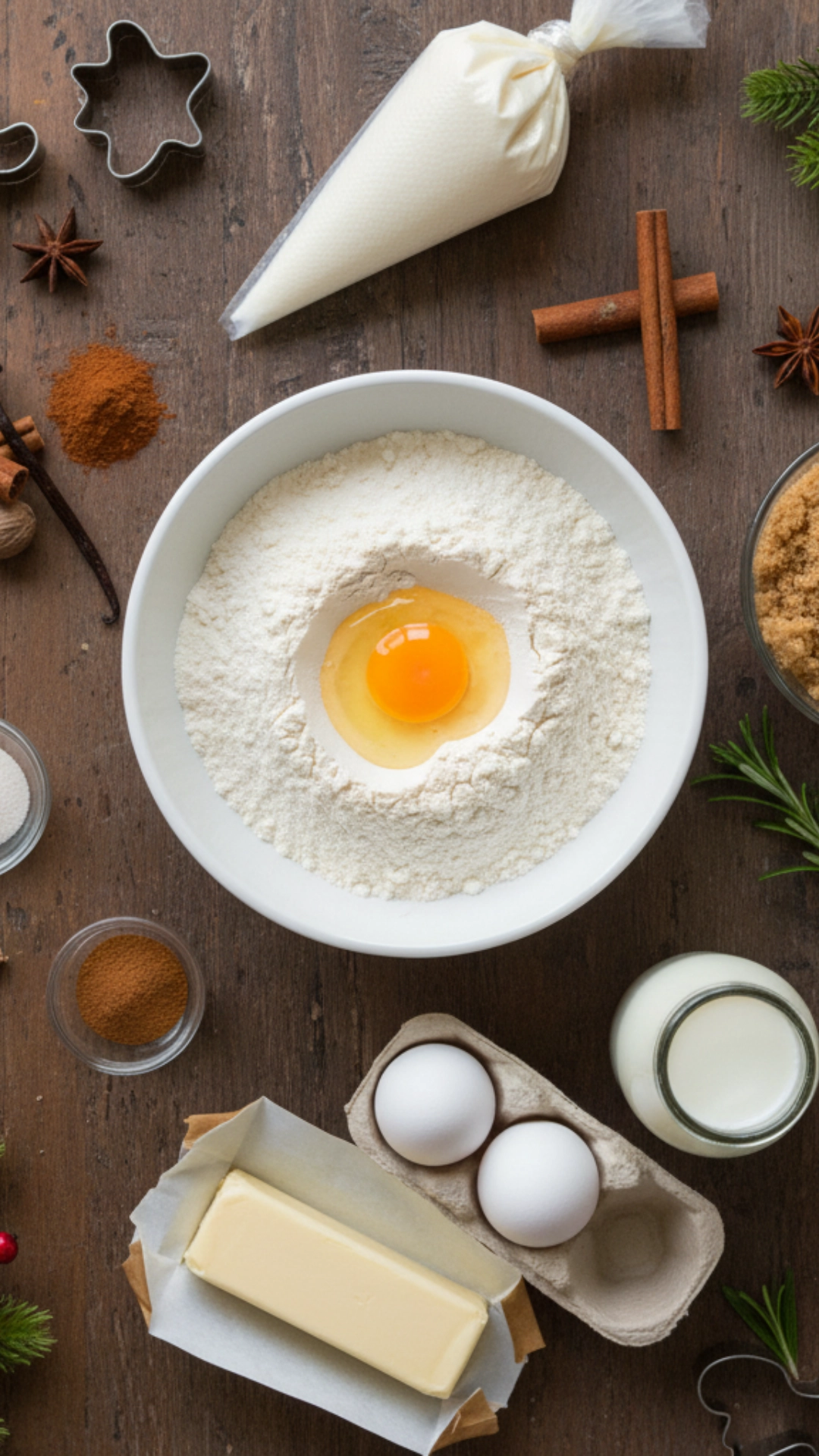
For the Dough:
- 1 cup (240ml) Whole Milk, warmed to 105-115°F (40-46°C)
- 1 tablespoon (10g) Active Dry Yeast
- 1/2 cup (100g) Granulated Sugar, divided
- 1/2 cup (113g) Unsalted Butter, melted
- 2 large Eggs, at room temperature
- 1 teaspoon Vanilla Extract
- 5 cups (600g) All-Purpose Flour
- 1 teaspoon Salt
For the Filling:
- 1 1/2 cups (300g) Light Brown Sugar, packed
- 2 tablespoons (16g) Ground Cinnamon
- 1/2 cup (113g) Unsalted Butter, very soft (room temperature)
- 1/2 cup (120ml) Heavy Cream (for pouring over rolls before baking)
For the Cream Cheese Frosting:
- 6 ounces (170g) Cream Cheese, full-fat block, softened
- 2 tablespoons (28g) Unsalted Butter, softened
- 2 cups (240g) Powdered Sugar, sifted
- 1 teaspoon Vanilla Extract
- 1-2 tablespoons Milk or Heavy Cream (to reach desired consistency)
Step-by-Step Guide to Irresistible Holiday Cinnamon Rolls
Let’s break down the process. Don’t be intimidated by working with yeast. Follow these steps, and you’ll be a pro in no time.
Step 1: Making the Fluffy Dough
This dough is the heart of your Christmas Cinnamon Rolls. Treat it with a bit of love, and it will reward you.
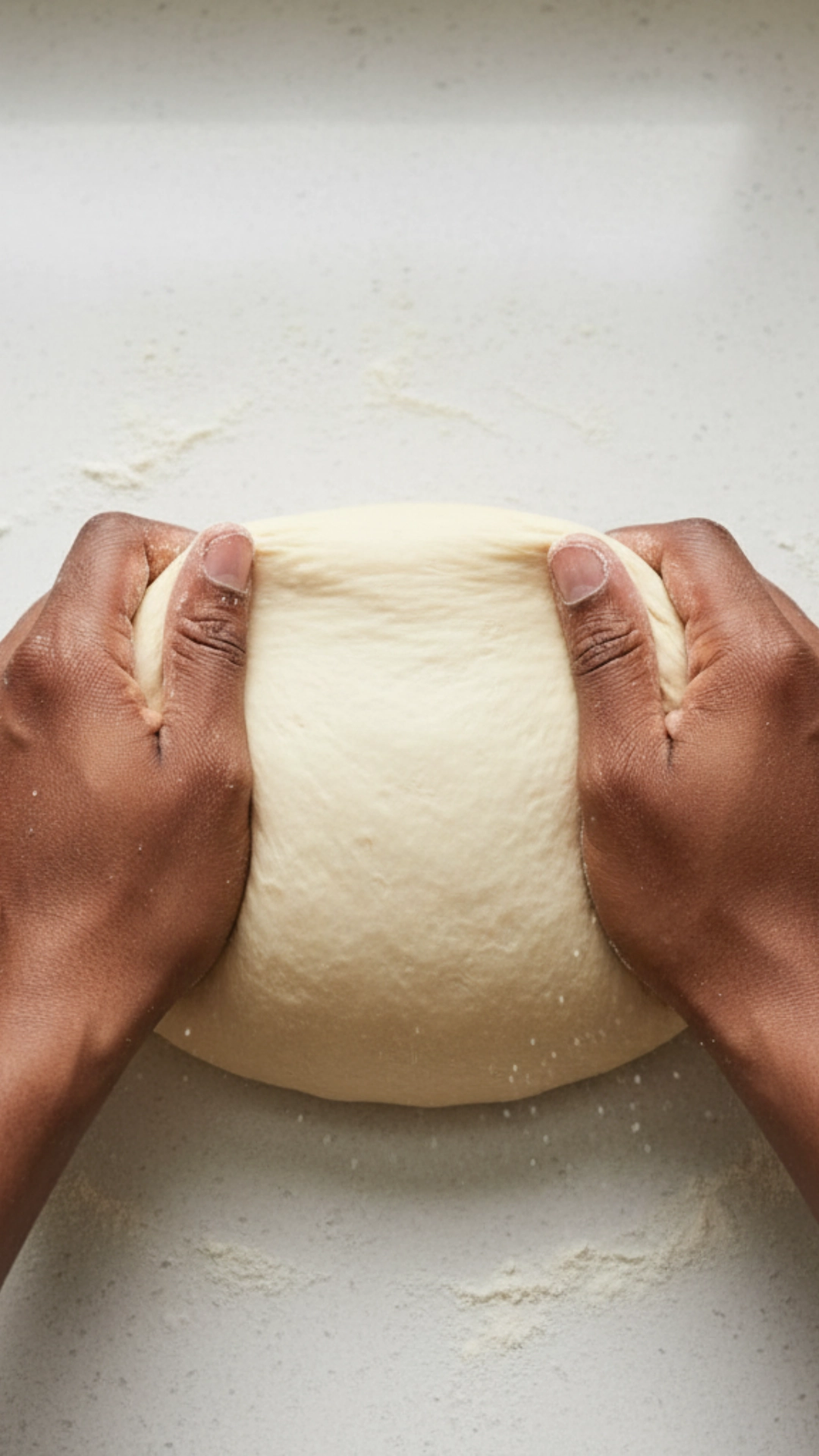
- Activate the Yeast: Pour the lukewarm milk into a large bowl or the bowl of a stand mixer. Sprinkle the yeast and one tablespoon of the granulated sugar over the milk. Give it a gentle whisk and let it sit for about 5-10 minutes. You’ll know it’s ready when it becomes frothy and bubbly. If it doesn’t, your yeast might be old, and you should start over.
- Mix the Wet Ingredients: Once the yeast is foamy, add the melted butter, the remaining granulated sugar, and the room-temperature eggs. Whisk everything together until it’s well combined.
- Add the Dry Ingredients: Add the flour and salt to the wet ingredients. Using a stand mixer, attach the dough hook and mix on low speed until a shaggy dough forms. If you’re mixing by hand, use a wooden spoon to stir until you can no longer mix it easily.
- Knead the Dough: This step is crucial for developing the gluten that gives the rolls structure and chew.
- By Stand Mixer: Increase the speed to medium-low and let the mixer knead the dough for about 8-10 minutes. The dough should become smooth and elastic and pull away from the sides of the bowl. It will be slightly sticky to the touch.
- By Hand: Turn the dough out onto a lightly floured surface. Knead for about 10-15 minutes. Push the dough away from you with the heel of your hand, fold it over, give it a quarter turn, and repeat. It’s a workout, but it’s worth it! You’re looking for the same smooth, elastic texture.
- The First Rise: Form the kneaded dough into a ball. Lightly grease a large bowl with oil or cooking spray. Place the dough in the bowl and turn it over once to coat the top. Cover the bowl with plastic wrap or a clean kitchen towel. Let it rise in a warm, draft-free place for 1 to 1.5 hours, or until it has doubled in size.
Step 2: Crafting the Perfect Cinnamon-Sugar Filling
While the dough is rising, you can prepare your delicious filling.
- Combine Ingredients: In a medium bowl, combine the very soft butter, brown sugar, and ground cinnamon.
- Mix Well: Mix everything together with a spatula or fork until it forms a thick, smooth paste. The key here is to have the butter perfectly softened. If it’s too cold, it will be lumpy, and if it’s melted, it will leak out of your rolls during baking.
Step 3: The Art of the Roll and Cut
This is where your cinnamon rolls start to take shape. It’s a fun and satisfying part of the process.
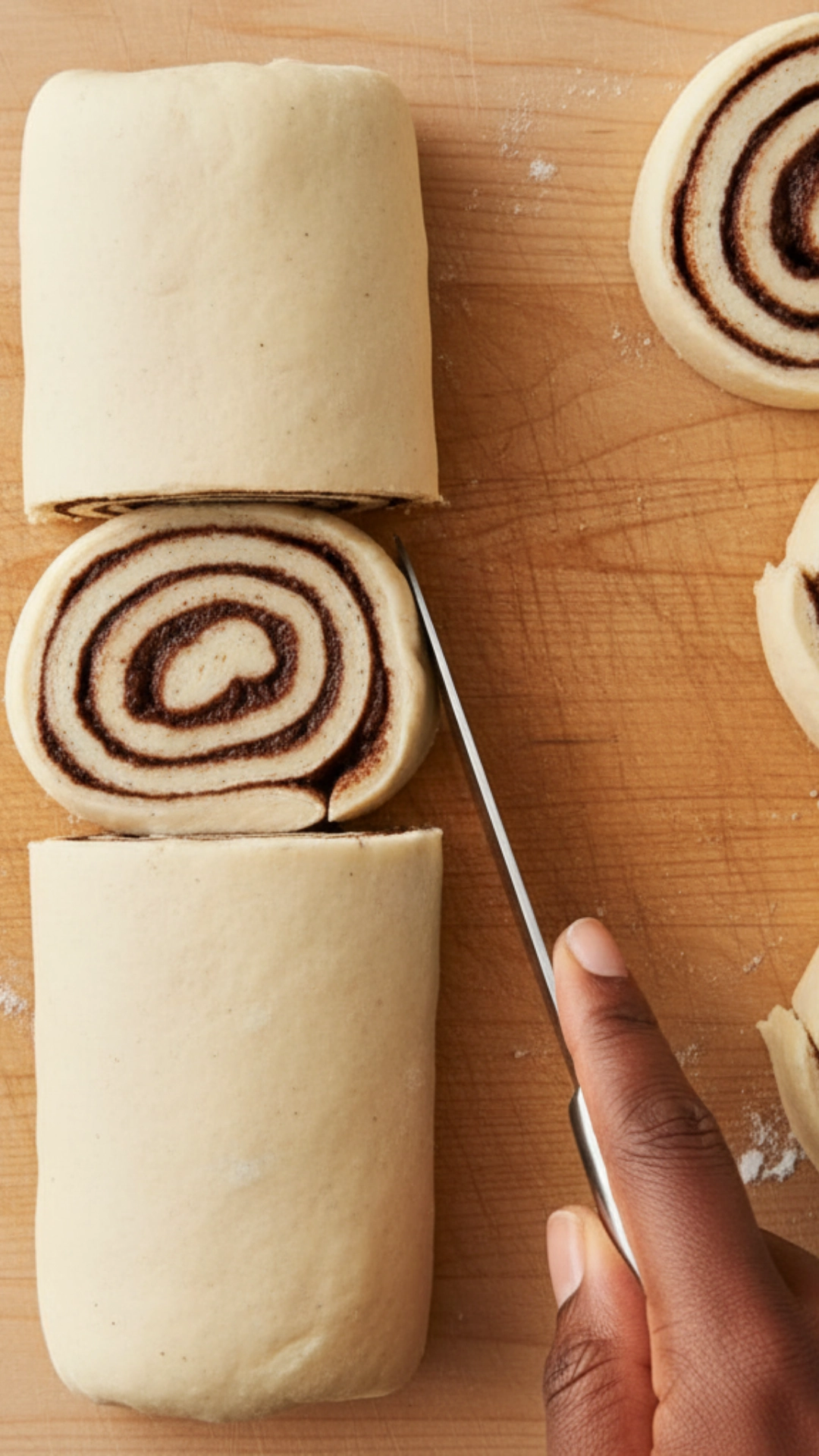
- Roll Out the Dough: Once the dough has doubled, gently punch it to release the air. Transfer it to a lightly floured work surface. Use a rolling pin to roll the dough into a large rectangle, about 12×18 inches and about 1/4 inch thick. Try to keep the corners as square as possible.
- Spread the Filling: Using an offset spatula or the back of a spoon, spread the cinnamon-sugar filling evenly over the entire surface of the dough, leaving a small half-inch border along one of the long edges.
- Roll it Up: Roll the dough up into a tight log, starting from the long edge opposite the clean border. A tight roll is essential for defined spirals. The clean border will help you seal the seam at the end. Pinch the seam to seal it closed.
- Cut the Rolls: For immaculate cuts, use unflavored dental floss or a sharp serrated knife. Slide the floss under the log, bring the ends up, cross them over, and pull to slice through the dough. This prevents you from squishing the rolls. Cut the log into 12 equal-sized rolls.
Step 4: The Second Rise for Ultimate Fluffiness
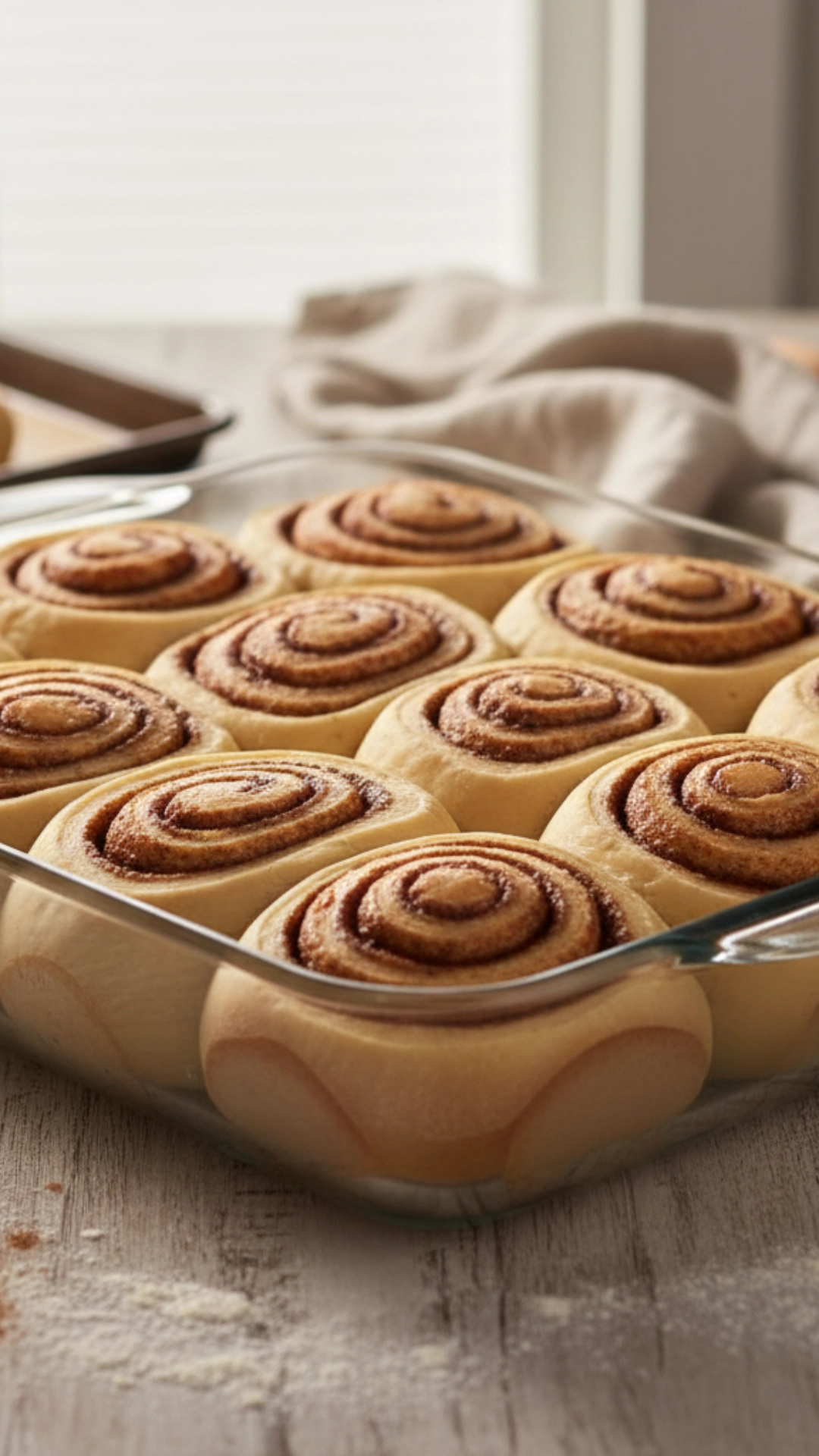
This second rise, or proof, makes the rolls extra light and airy.
- Arrange in Pan: Grease a 9×13-inch baking pan with butter or cooking spray. Place the cut rolls in the pan, cut side up. They should be close together but not squished.
- Let Them Rise: Cover the pan with plastic wrap and let the rolls rise warmly for another 30-60 minutes, or until they have puffed up and touched each other.
Make-Ahead Tip: This is your stopping point if you want to bake these on Christmas morning. After arranging the rolls in the pan, cover them tightly with plastic wrap and place them in the refrigerator overnight (for up to 18 hours). The next morning, take them out of the fridge and let them sit at room temperature for about an hour to take the chill off while your oven preheats. Then bake as directed!
Step 5: Baking to Golden Perfection
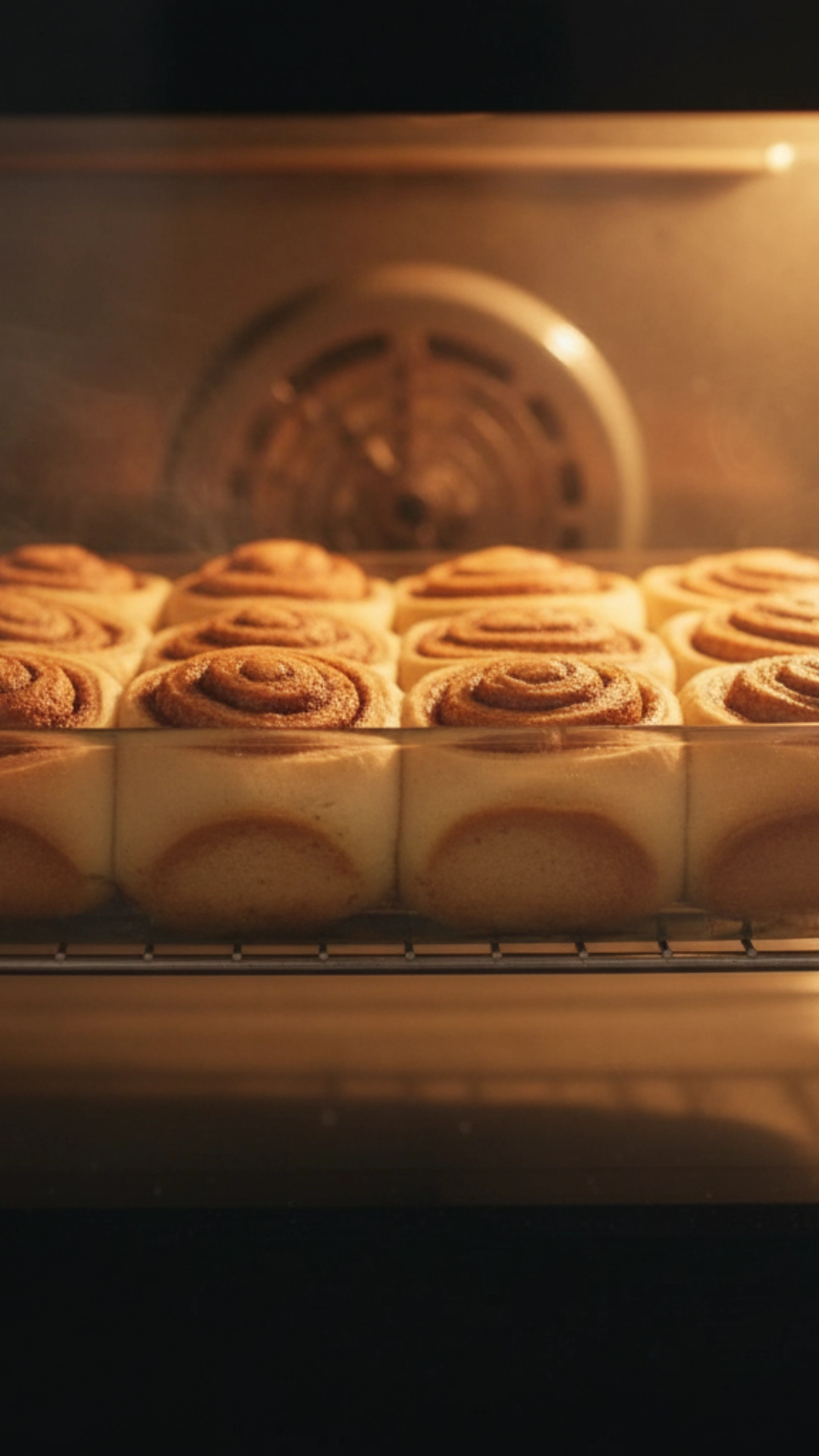
The smell that will fill your house is pure bliss.
- Preheat Oven: Preheat your oven to 375°F (190°C).
- Bake: Uncover the rolls and bake for 20-25 minutes until golden brown and cooked through. The center roll should be firm to the touch. If they start to brown too quickly, you can loosely tent the pan with aluminum foil for the last 5-10 minutes of baking.
- Cool Slightly: Let the rolls cool in the pan on a wire rack for 10-15 minutes before frosting. You want them to be warm, but not piping hot, so the frosting melts slightly into all the crevices without turning into a liquid pool.
Step 6: The Ultimate Cream Cheese Frosting

This tangy, sweet frosting is the perfect finishing touch.
- Beat Cream Cheese and Butter: In a medium bowl, using an electric mixer, beat the softened cream cheese and softened butter together on medium speed until smooth and creamy.
- Add Sugar and Vanilla: Add the powdered sugar and vanilla extract. Mix on low speed until the sugar is incorporated, then increase the speed to medium-high and beat for 2-3 minutes until the frosting is light and fluffy.
- Adjust Consistency: If the frosting is too thick, add a tablespoon of milk or cream until it reaches your desired spreadable consistency.
- Frost the Rolls: Spread the frosting generously over the warm cinnamon rolls. The warmth will help it melt slightly, creating that iconic gooey topping. Serve immediately and enjoy the fruits of your labor!
Pro Tips for Cinnamon Roll Success
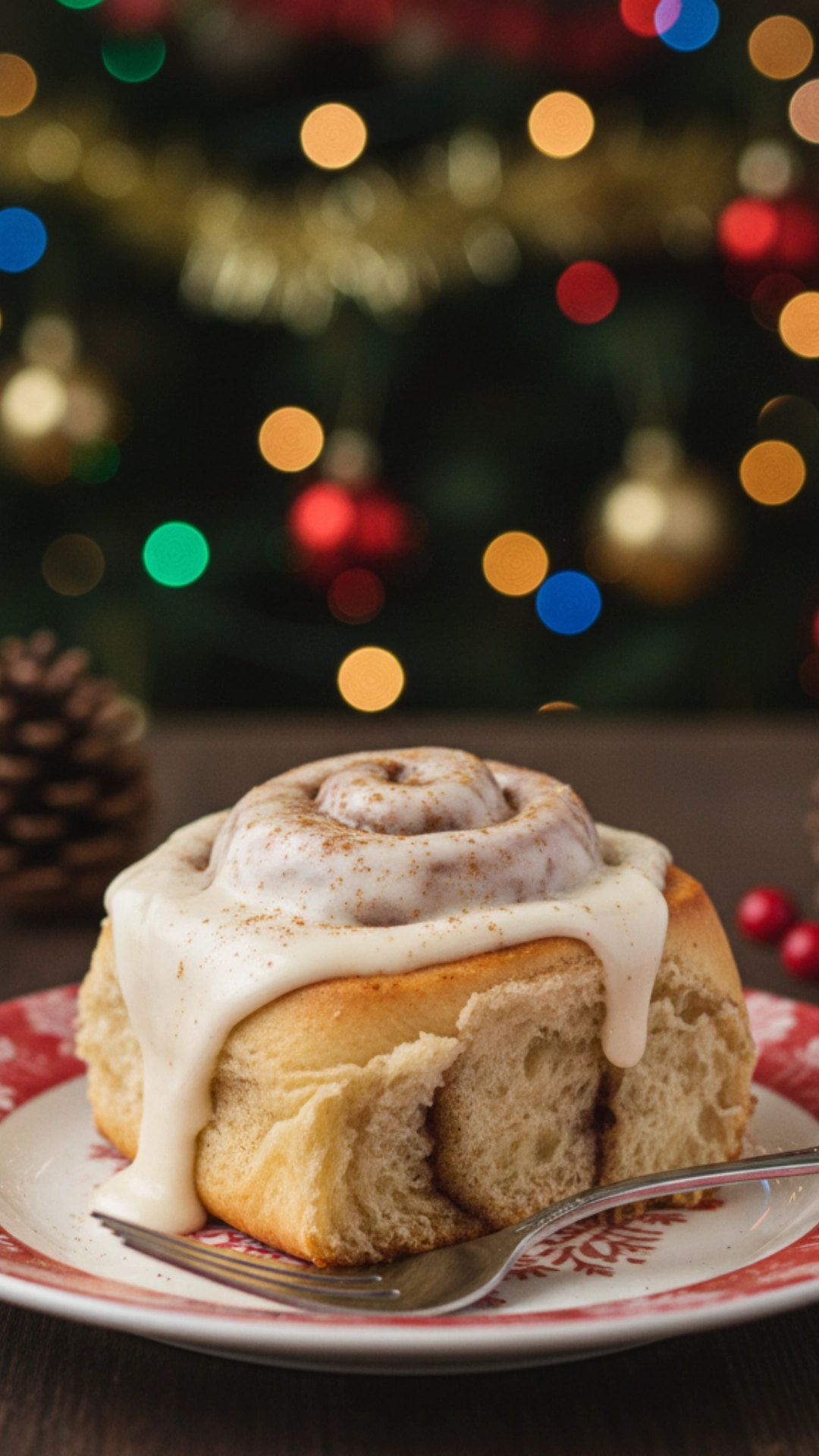
- Room Temperature is Key: For the best results, use room temperature eggs, butter, and cream cheese. They incorporate much more easily, resulting in a smoother dough and frosting.
- Don’t Kill the Yeast: Ensure your milk is lukewarm, not hot. If it’s too hot, it will kill the yeast, and your dough won’t rise. A good test is to dab a little on your wrist; it should feel warm.
- The Dental Floss Trick: I can’t recommend this enough for cutting your rolls. It gives you a perfectly clean slice without squishing your beautiful spirals.
- The Heavy Cream Secret: For extra gooey and decadent rolls, pour about 1/2 cup of warm heavy cream over the rolls right before you put them in the oven. This creates a rich, caramel-like sauce at the bottom.
- Don’t Overbake: Keep a close eye on your rolls. Overbaking is the number one cause of dry, tough cinnamon rolls. They should be a beautiful golden brown.
Common Mistakes to Avoid
- Using Melted Butter in the Filling: This is a standard shortcut, but it will cause your filling to leak out during baking, creating a greasy mess at the bottom of your pan instead of staying inside the roll. Use very soft, spreadable butter.
- Under-Kneading the Dough: Kneading is essential. If you don’t knead the dough long enough, the gluten won’t develop properly, and your rolls will be dense and heavy instead of light and fluffy.
- Rolling the Dough Too Thin: The rolls can become tough if the dough is too thin. Aim for a 1/4-inch thickness for the perfect balance of dough and filling.
- Frosting When Too Hot: If you frost the rolls straight out of the oven, the frosting will completely melt and run off. Let them cool for 10 minutes so the frosting can softly melt into the crevices without disappearing.
Conclusion: Your New Holiday Tradition
Nothing is better than sharing warm, homemade Christmas Cinnamon Rolls with the people you love. This recipe is designed to be foolproof, creating the softest, gooiest, and most delicious rolls you’ve ever had. I hope this becomes a beloved tradition in your home, just like mine.
The time and love you put into making them will be tasted in every bite, creating memories long after the last crumb. Happy baking, and Merry Christmas!
